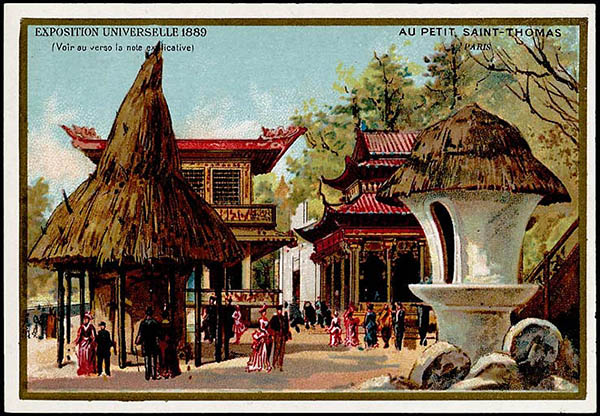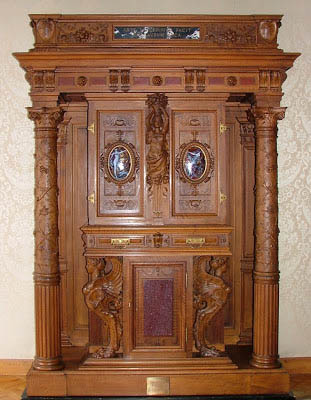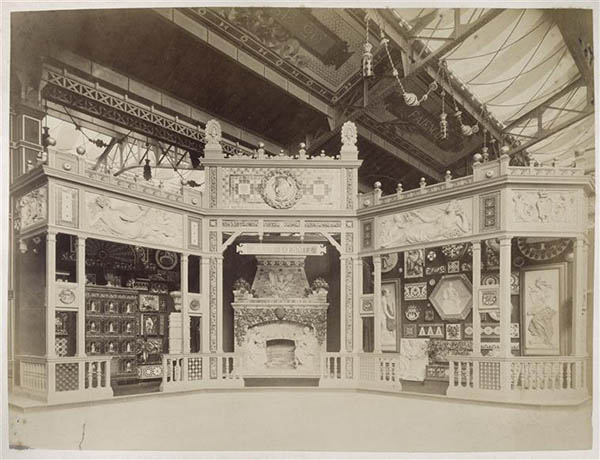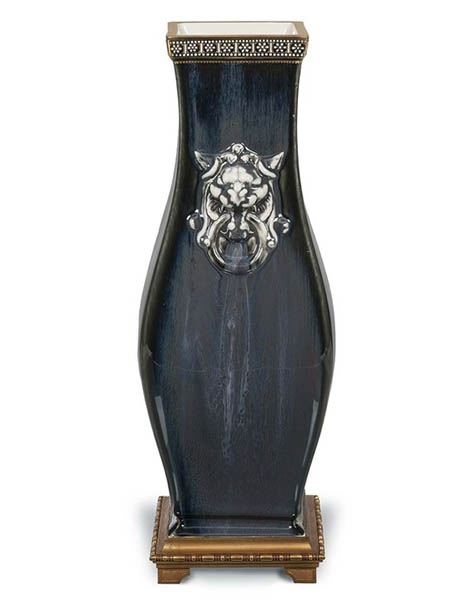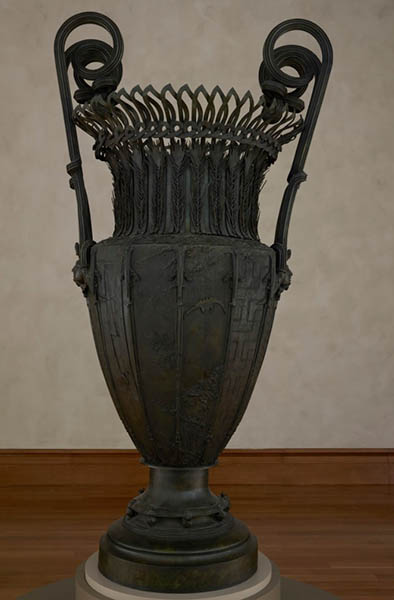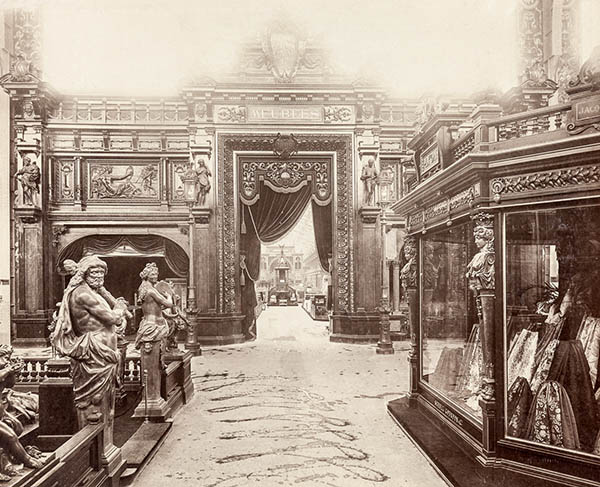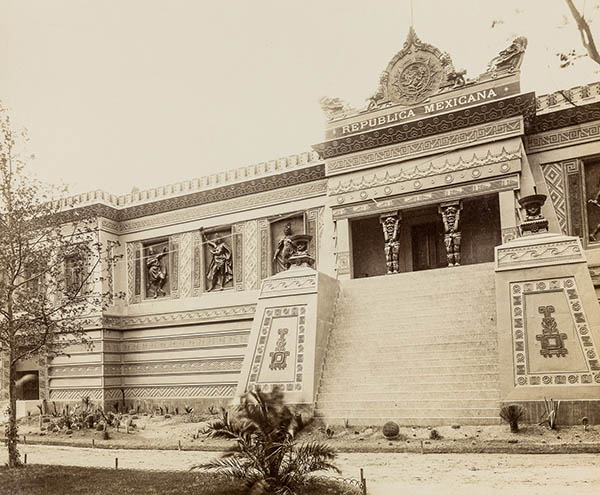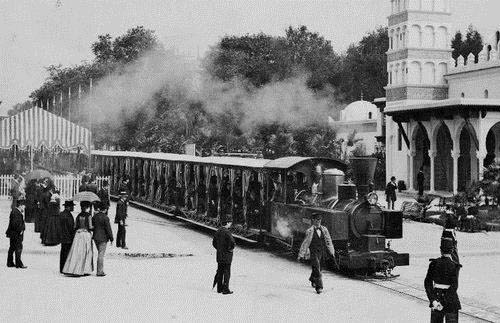World's Fair of 1889
Download PDFLike the World’s Fair of 1876 in Philadelphia, the exhibition of 1889 in Paris celebrates a centenary, that of the French Revolution. It is directed by Jean-Charles Alphand, engineer in the city of Paris and close collaborator of Baron Haussmann . The exhibitions of the French colonies and the Ministry of War are held on the Esplanade des Invalides, while Art and Industry are presented on the Champs de Mars and at the Palais du Trocadéro.
A reconstruction of the Bastille was erected, and the Republic showed the result of its first years: after the defeat of the Franco-Prussian war, the turmoil of the Commune and a severe economic crisis, it was able to build a vast colonial Empire, a powerful industry and is again one of the great European powers. This republican exhibition does not please the monarchies of Europe, so that most of them do not erect pavilions there. The architectural tour of the world gives thus a major part to the other continents, and also includes a history of human habitation, with the reconstruction of troglodyte caves, neolithic lake cities, and houses of ancient civilizations of the world. Other innovation that responds to the Philadelphia Women's Pavilion, the 1889 Exhibition reserved a Pavilion for Children, designed to amuse young audiences.
The Universal Exhibition of 1889 marks especially the spirits for its architectural feats. The metal structures allow the deployment of new architectural forms, and in particular the use of glass on increasingly large surfaces. The metal architecture dominates the Expo and the Palais des Machines by Dutert and Contamine is its most impressive expression. It contains a single vault, and a nave with an area of 77,000 m2. Huysmans described the work as "an exorbitant lancet arch that joins under the infinite sky of the windows its prestigious points", and whose 35 000m2 of glass surface come from Saint-Gobain. Visitors can discover Dayex's voting machines, atmospheric hammers and cigarette making machines, as well as the Tissot clock making workshop, phonographs and telephones.
The Eiffel Tower , built for the occasion by Gustave Eiffel , is an immediate success. Measuring 324 meters high, it was at the time the highest monument in the world. The project during its construction meets many critics. Some artists - painters, architects, writers and sculptors - sign a petition "against the erection, in the heart of our capital, of the useless and monstrous Eiffel Tower." Gas burners illuminate the tower every night. Among the visitors of the exhibition nearly 2 million climb the Eiffel Tower, or nearly 12,000 per day. Beyond the architecture, it is the unprecedented panorama of Paris, from the floors of the structure, that attract the crowds, at a time when one does not know the plane view.
It is also the Decauville railway that is a symbol of the progress made during the nineteenth century. Inaugurated on 4 May 1889, the train runs a distance of 3 km between the Champs de Mars and the Invalides. Thanks to Hippolyte Fontaine, the event has "the largest known electric lighting installation", which allows the Expo to remain open in the evening until midnight. The luminous fountain of Coutan, which changes color according to the music played by the band, is a great success.
For the Decorative Arts, separate pavilions exhibit the National Manufactures, ceramics, furniture, goldsmithery, jewelery, etc. Thus, the Manufacture of Sèvres directed by Carrier-Belleuse, the Gobelins, Beauvais and La Mosaïque are highlighted by a separate exhibition. Carrier-Belleuse showed a collection of models that he drew, which greatly renewed the style of the factory.
At the Goldmith’s Gallery, Christofle exhibits models by Mercié, Coutan and Delaplanche, while at the Art Bronzes Gallery, the monumental vase of Rindel d'Illzach, inspired by Symbolism, captures the attention.
At the Furniture Gallery, the Louis XV and Renaissance styles are in the spotlight. A cabinet designed by Paul Sédille, carved by Allar and decorated with enamels after the symbolist Olivier Merson, obtains a gold medal. Finally, the exhibition marks the emergence of a new artistic style. The school of Nancy, the spearhead of Art Nouveau in France, sees several of its members rewarded as Emile Gallé, Emile Friant or Victor Prouvé.










